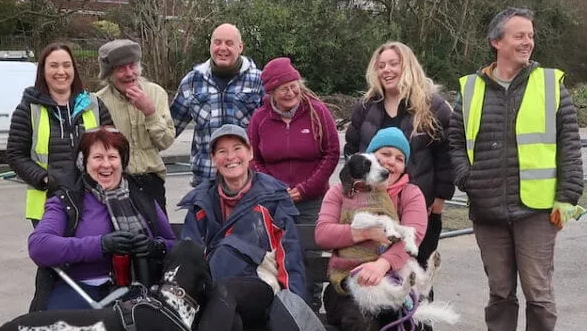Are peatlands better than trees?

Which is more effective at storing carbon in the UK, all our peatlands or all our forests? Both bogs and forests cover a similar proportion of the total land area in this country, around three million hectares each.
Same land cover, very different storage.
In total, the UK’s peatlands (also known as peat bogs) store over three billion tonnes of carbon. To put this figure into perspective, that’s equivalent to 20 years of all the UK’s carbon emissions.
How does this compare to the carbon captured and stored in all the forests in the UK? It’s not even close! The UK’s peatlands store so much more – around the same amount as all the forest in the UK, France and Germany, put together. This explains the importance of peatlands.
The ‘life expectancy’ of the carbon stored in trees is relatively short as trees live over a time frame measured in decades, or a few centuries at best, before they decompose and release their carbon. Unlike trees, a wet peatland keeps carbon dioxide locked up in the ground with no time limit. Speaking on the Carbon Copy Podcast, Alex Hubberstey from Lancashire Peat Partnership comments:
“You have to think of a forest as a ‘temporary’ carbon store… obviously an oak tree might last a thousand years, but peatlands can last 10,000 years and that carbon is never given off.”
It’s not all about the carbon.
In addition to their ability to store away carbon, peat bogs provide other valuable services, helping to reduce flood risks and purify water, as well as offering vital habitat for some of the UK’s most important and rare species. As Simon Gray from Ulster Wildlife explains:
“There are lots of endemic and rare species that are very specifically adapted to living on bogs, like insectivorous plants such as sundews, or particular bird species like curlews and hen harriers. The reason why peatlands have started to get a lot more limelight is because of their importance when it comes to carbon, but also in providing other ecosystem services like flood mitigation, improving water quality, and all sorts of things.”
Seeing this magic isn’t easy. We need to look down instead of up; to see something that’s already there that we can work with instead of trying to invent something new.
Restoring peatlands.
Unfortunately, we can’t ignore the state of peatlands if we want to keep all this carbon locked up in the ground. A dry, degraded peatland – like many in England’s uplands – is a big source of carbon emissions as the carbon stored within the peat soil is lost to the atmosphere. And there’s a big opportunity to restore these peat bogs and the wider benefits they provide, as only 22% are currently in a near natural or rewetted condition.
Ultimately, in choosing between tree planting and restoring peatlands, the best value lies with improving peat. But, of course, it’s not a forced choice between one or the other. The forced choice is to do something about both, to avoid negatively impacting our already overloaded climate.
If you’re interested in learning more about what you can do locally, please visit our peatland restoration page.
Recommended from Carbon Copy
-

Copy These! 5 Big Local Ideas About Using Decentralised Energy
Communities around the UK are generating their own electricity - through solar, hydro and wind. But how can they ensure…
-
 Affordable Energy, Buildings & Places, Climate Action, Good Food, Greater Fairness, Health & Wellbeing, Less Waste, More Jobs, Strong Communities
Affordable Energy, Buildings & Places, Climate Action, Good Food, Greater Fairness, Health & Wellbeing, Less Waste, More Jobs, Strong CommunitiesCopy These! 5 Big Local Ideas About Creating A Community Hub
Learn how communities are reinvigorating once-forgotten spaces, to bring local environmental, social and economic benefits.
-

How to Choose a Sustainable Christmas Tree: Real vs Fake
As you’re gearing up for the festive season, the question of which Christmas tree to bring home might come up.…
-
 Food and Agriculture, Good Food, Greater Fairness, Health & Wellbeing, Less Waste, Thriving Wildlife
Food and Agriculture, Good Food, Greater Fairness, Health & Wellbeing, Less Waste, Thriving WildlifeCopy These! 5 Big Local Ideas About Creating A Food Partnership
We all need to eat, and a food partnership is a great way to create a stronger, more sustainable, more…